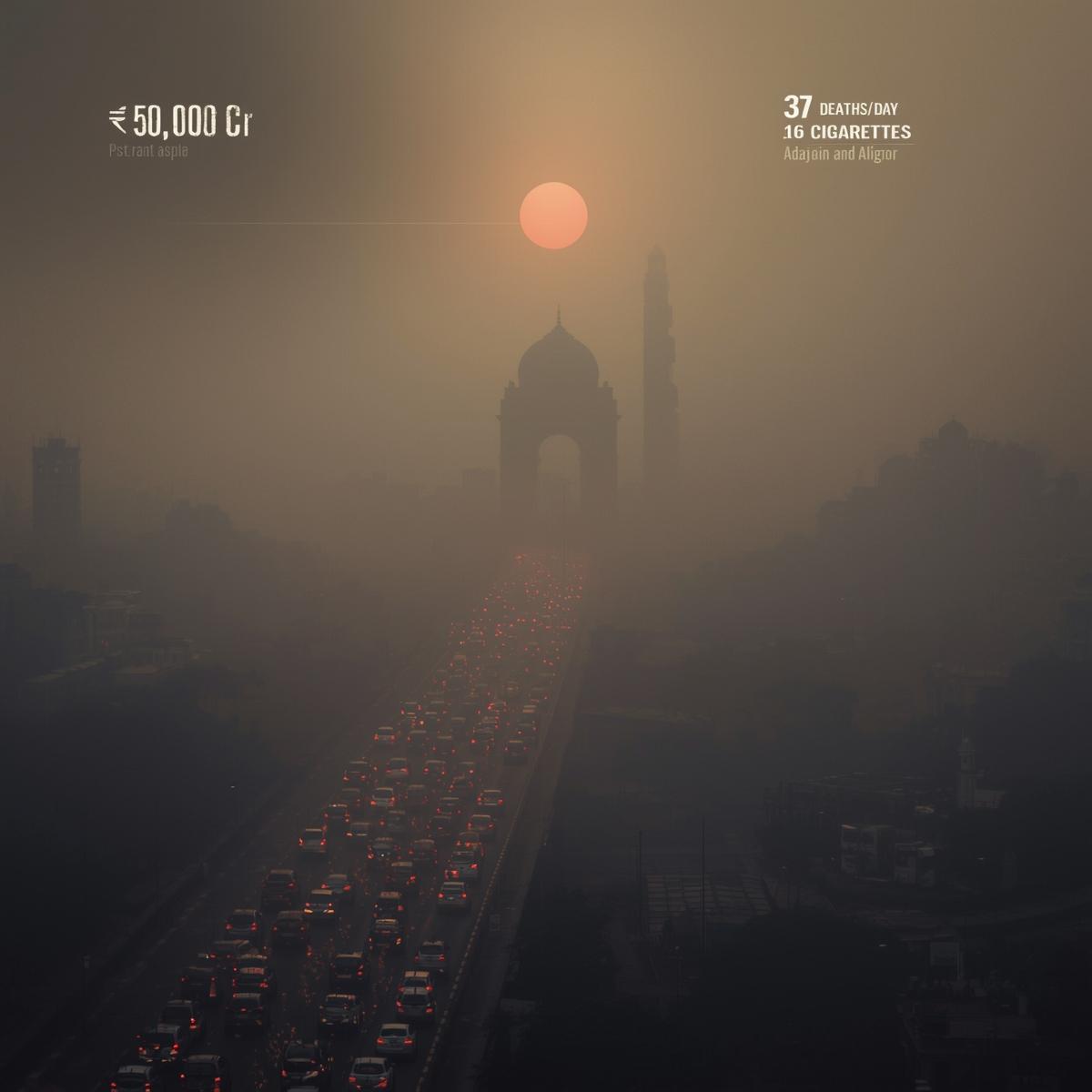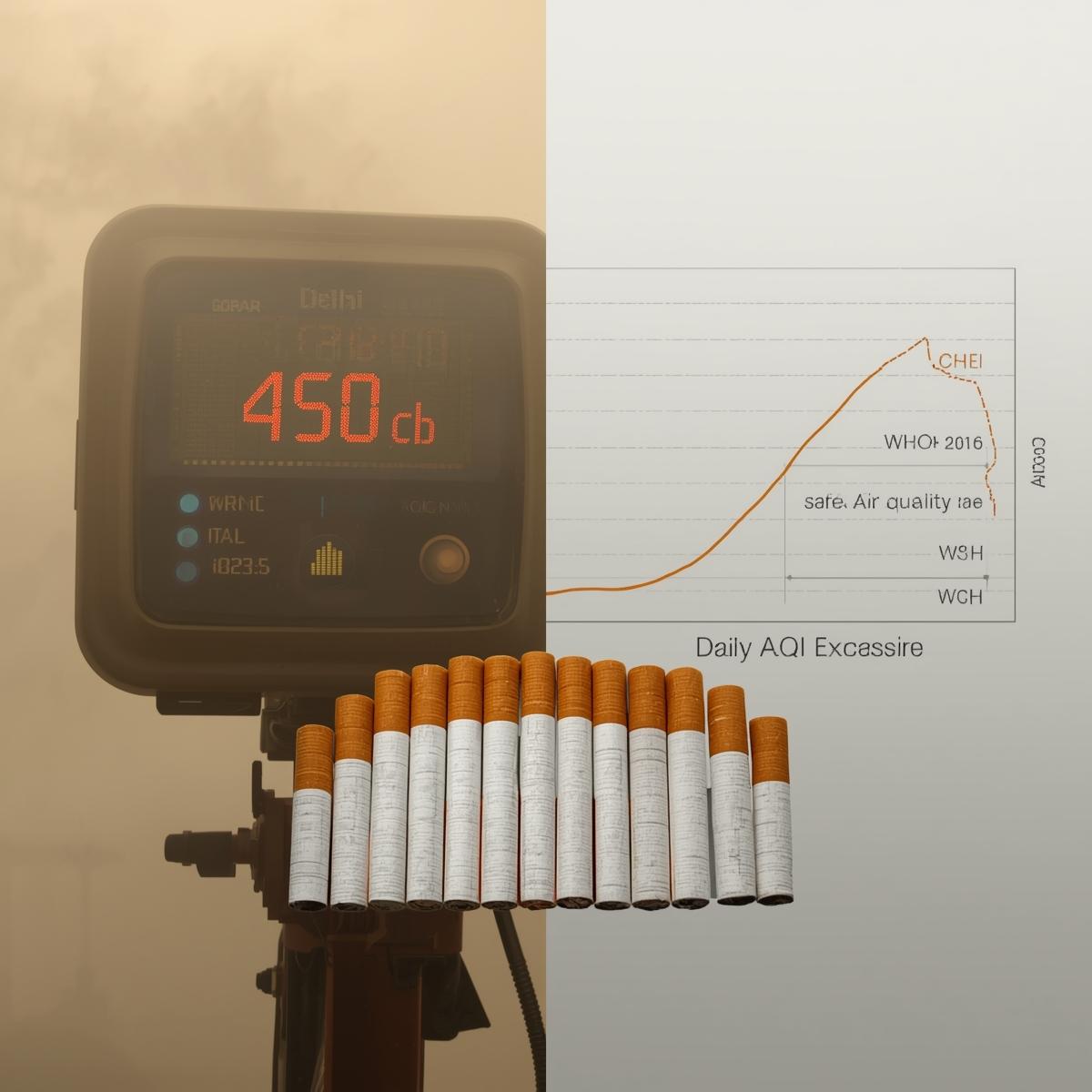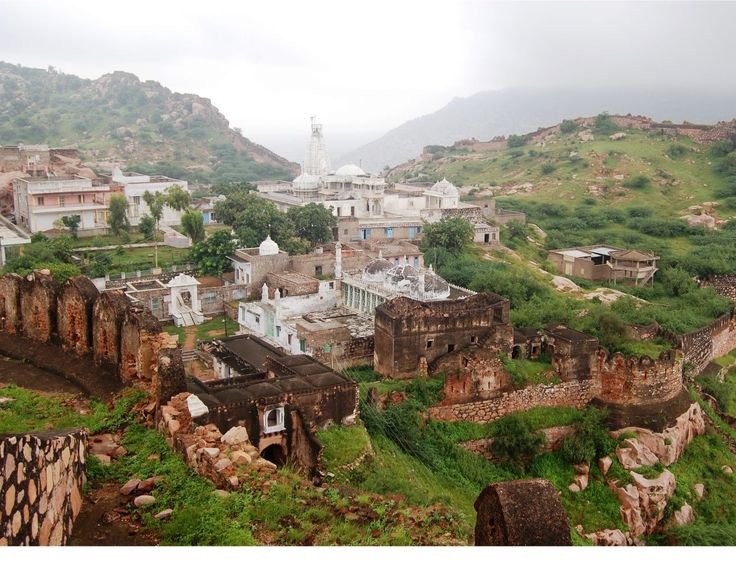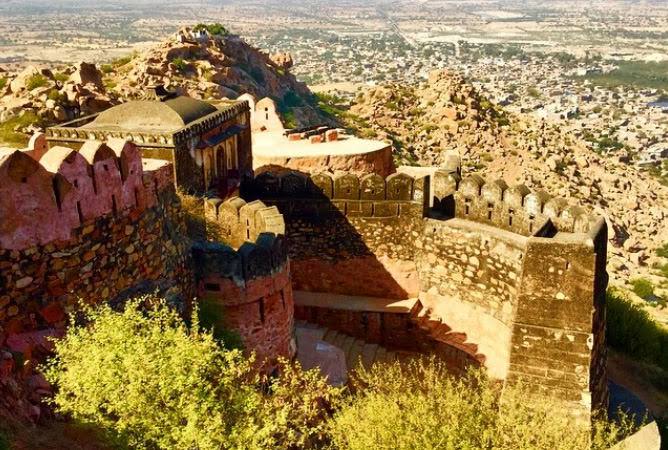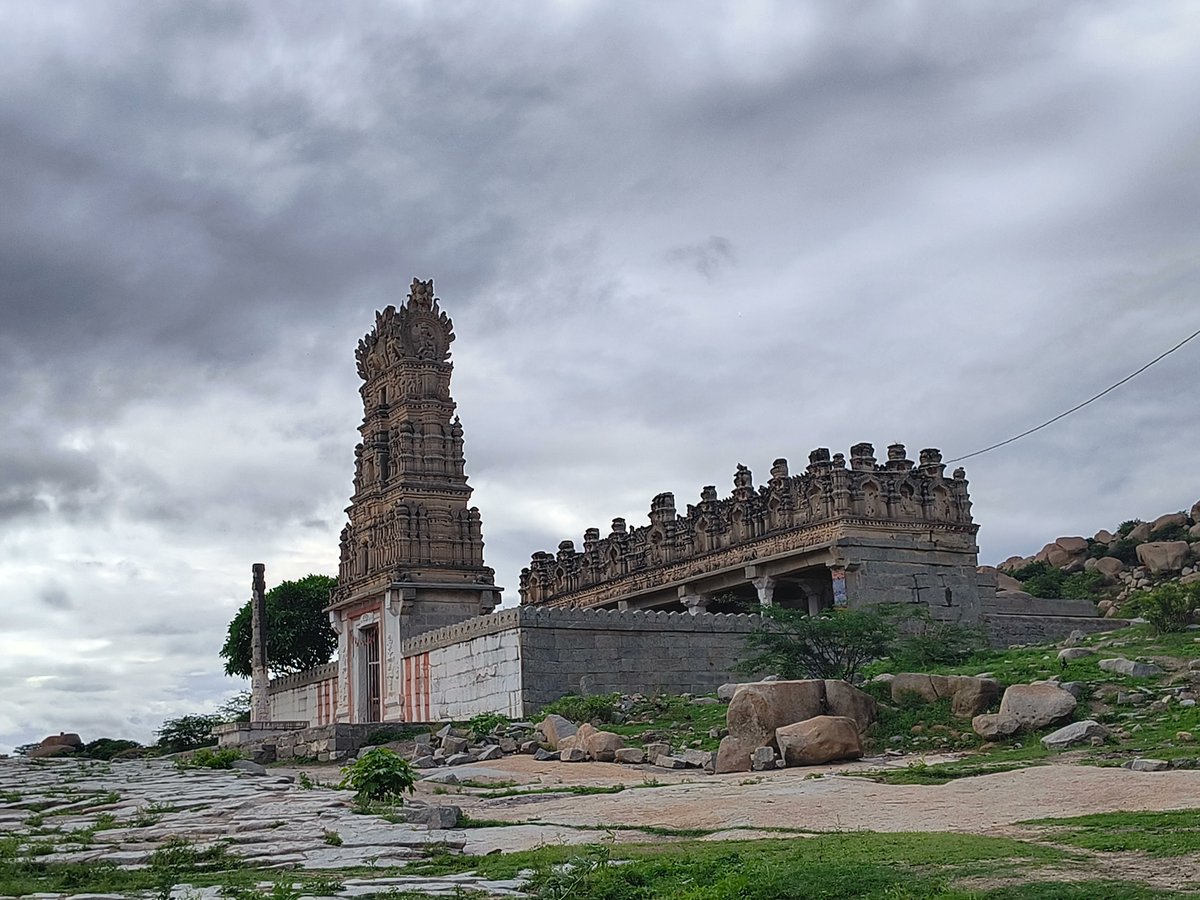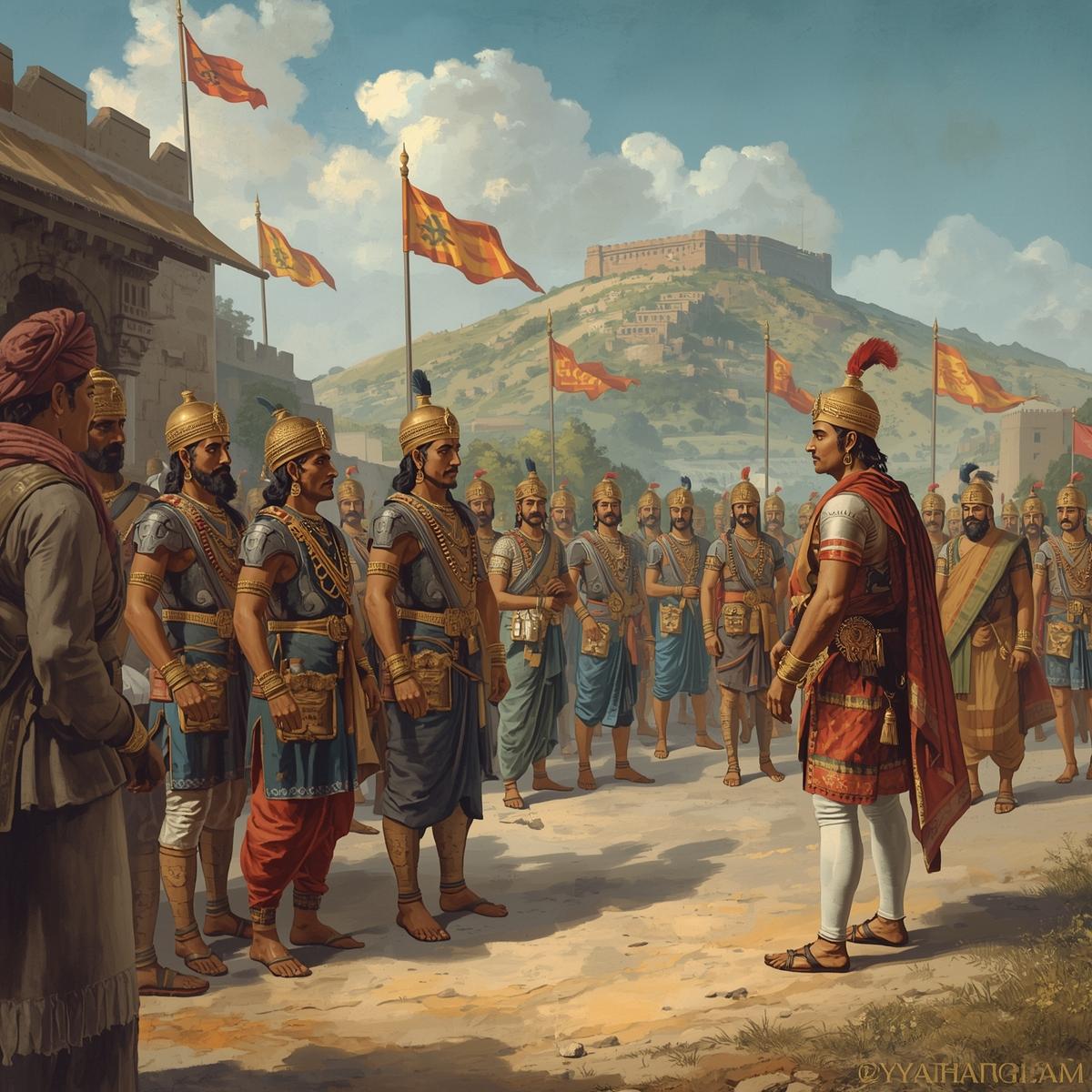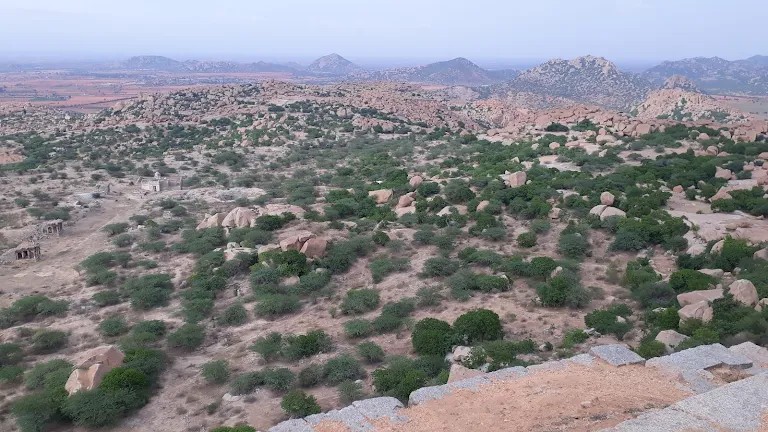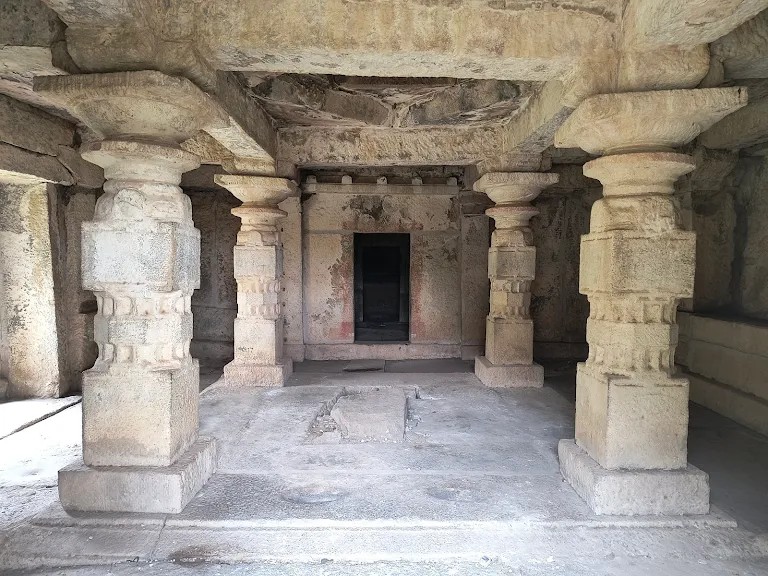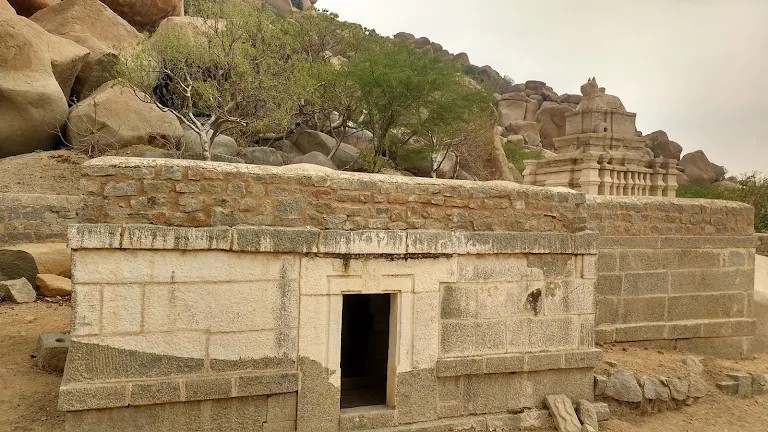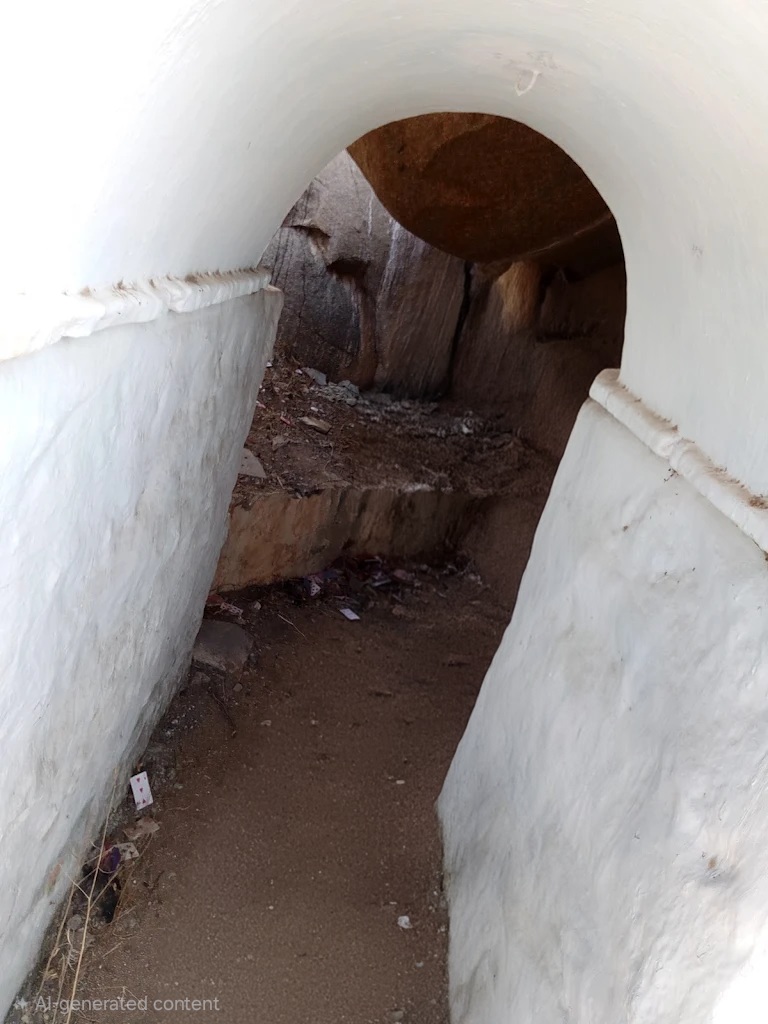1/n
THREAD | Aryan Invasion Theory debunked
Lot of people have asked about 'Aryan Invasion Theory' (AIT) and where it stands today.
An effort to bring various pieces together.
Please read on
THREAD | Aryan Invasion Theory debunked
Lot of people have asked about 'Aryan Invasion Theory' (AIT) and where it stands today.
An effort to bring various pieces together.
Please read on
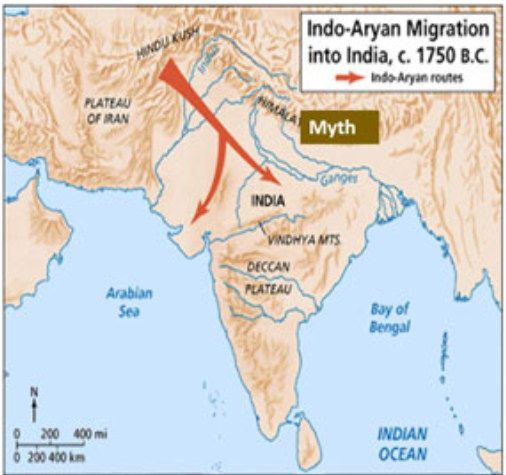
2/n
AIT was propounded at the time when most of the technologies were not available (e.g. Astronomical S/w, DNA Profiling, Paleontologist studies). AIT states that Aryan were Europeans who came on horses with 'Ayas' and settled during ~2000 BC.
AIT was propounded at the time when most of the technologies were not available (e.g. Astronomical S/w, DNA Profiling, Paleontologist studies). AIT states that Aryan were Europeans who came on horses with 'Ayas' and settled during ~2000 BC.
3/n
The cause of AIT propagation was to establish racial superiority and colonising India.
When they found Indian culture far rich and advanced, they stole it and termed Indus valley inhabitants as Aryan race who drove Dravidian to south.
The cause of AIT propagation was to establish racial superiority and colonising India.
When they found Indian culture far rich and advanced, they stole it and termed Indus valley inhabitants as Aryan race who drove Dravidian to south.

4/n
Long story of inferiority terming rich culture into inferior.
Treaty of Tordesillas entered between Spain and Portugal sanctioned by Pope Julius II to share the world by two powers was trigger point of comparison in faith and civilisations.
britannica.com/event/Treaty-o…




Long story of inferiority terming rich culture into inferior.
Treaty of Tordesillas entered between Spain and Portugal sanctioned by Pope Julius II to share the world by two powers was trigger point of comparison in faith and civilisations.
britannica.com/event/Treaty-o…




5/n
As per Treaty, Columbus (a Spanish Sailor) went westwards and ‘discovered’ America in AD 1492.
Vasco-Da-Gama 1460-1524 (a Portuguese Sailor) sailed eastwards to discover sea route to India Calicut on 20th May 1498
[pic indicative]


As per Treaty, Columbus (a Spanish Sailor) went westwards and ‘discovered’ America in AD 1492.
Vasco-Da-Gama 1460-1524 (a Portuguese Sailor) sailed eastwards to discover sea route to India Calicut on 20th May 1498
[pic indicative]


6/n
17th Century, Spain and Portugese colonised several territories including parts of India. Germans felt left behind. They started to dig in Sanskrit to match their own Language
britannica.com/topic/Aryan


17th Century, Spain and Portugese colonised several territories including parts of India. Germans felt left behind. They started to dig in Sanskrit to match their own Language
britannica.com/topic/Aryan


7/n
German Indologist Herder 1744-1803, Karl Wilhelm Friedrich Schlegel (1772-1829) worked to prove that Europeans were great amongst Greeks and Romans and called #sanskrit as mother language of all
@RajivMessage


German Indologist Herder 1744-1803, Karl Wilhelm Friedrich Schlegel (1772-1829) worked to prove that Europeans were great amongst Greeks and Romans and called #sanskrit as mother language of all
@RajivMessage
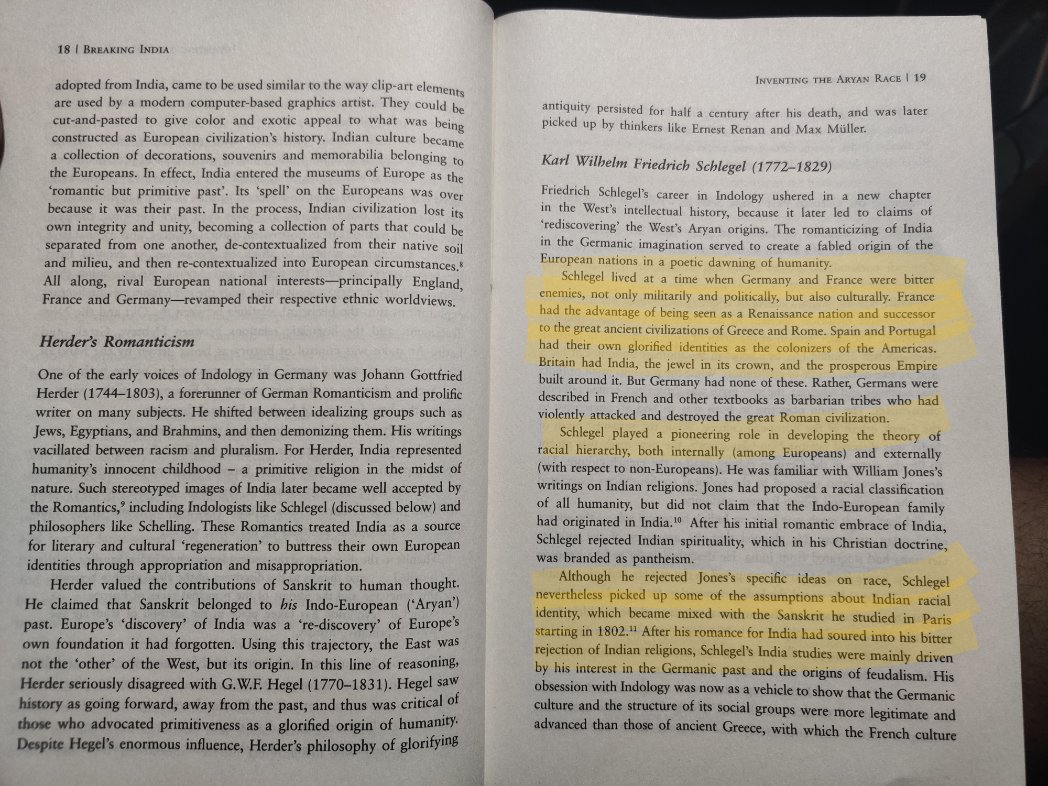
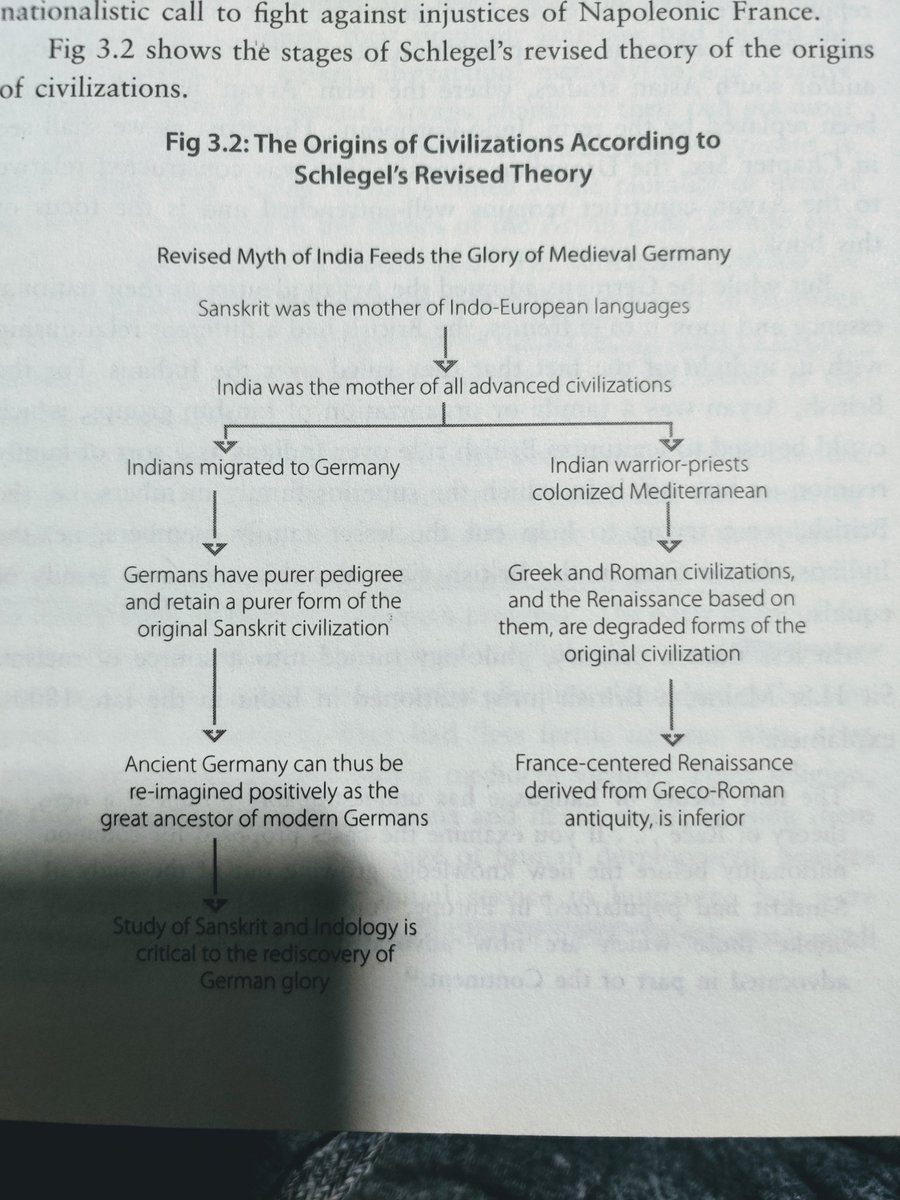
8/n
German William Jones 1746-1794 theorised mapped Indian figures into Biblical framework. He mapped ‘Manu’ as ‘Adam’ ‘Narasimha’ as ‘Nimrod’.
He said “Either the first eleven chapters of genesis are true or the whole fabric of our national religion is false”
@RajivMessage



German William Jones 1746-1794 theorised mapped Indian figures into Biblical framework. He mapped ‘Manu’ as ‘Adam’ ‘Narasimha’ as ‘Nimrod’.
He said “Either the first eleven chapters of genesis are true or the whole fabric of our national religion is false”
@RajivMessage

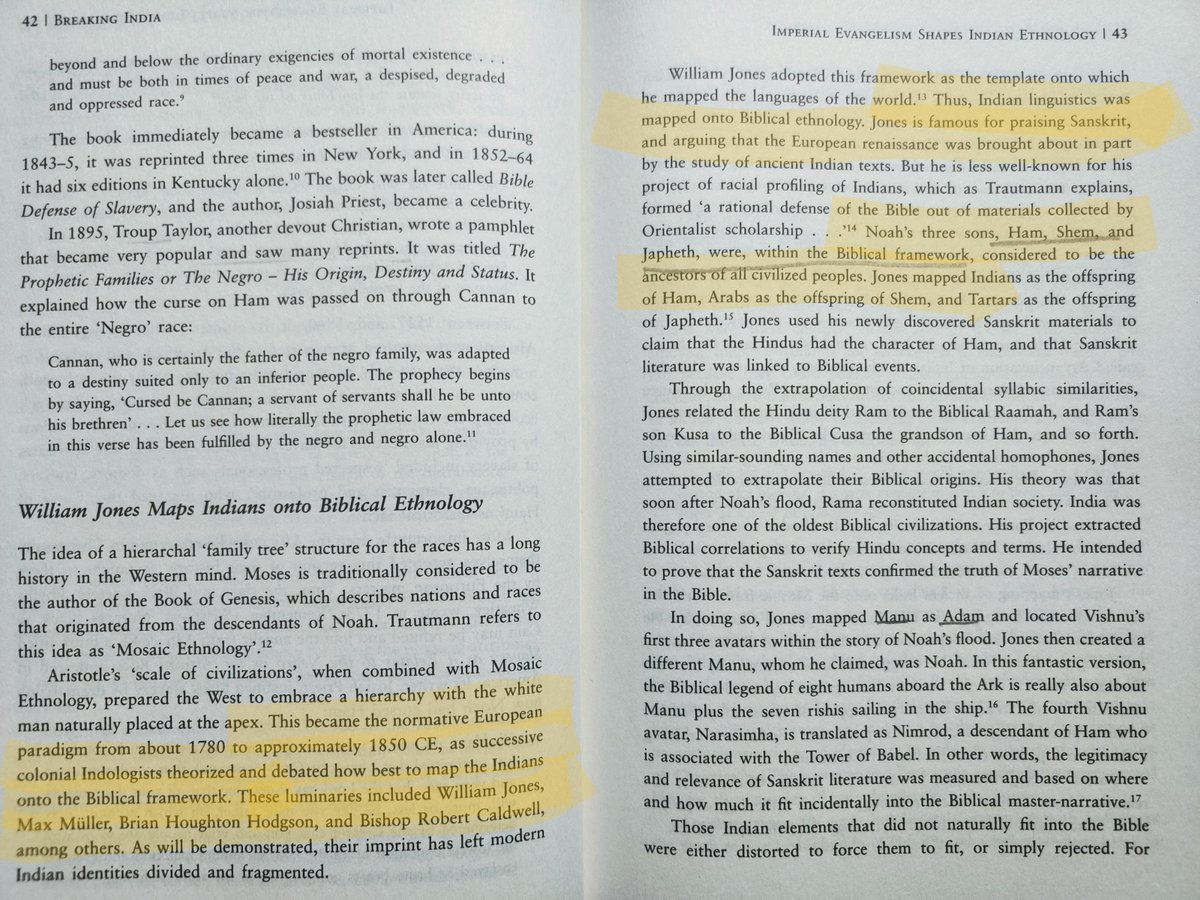
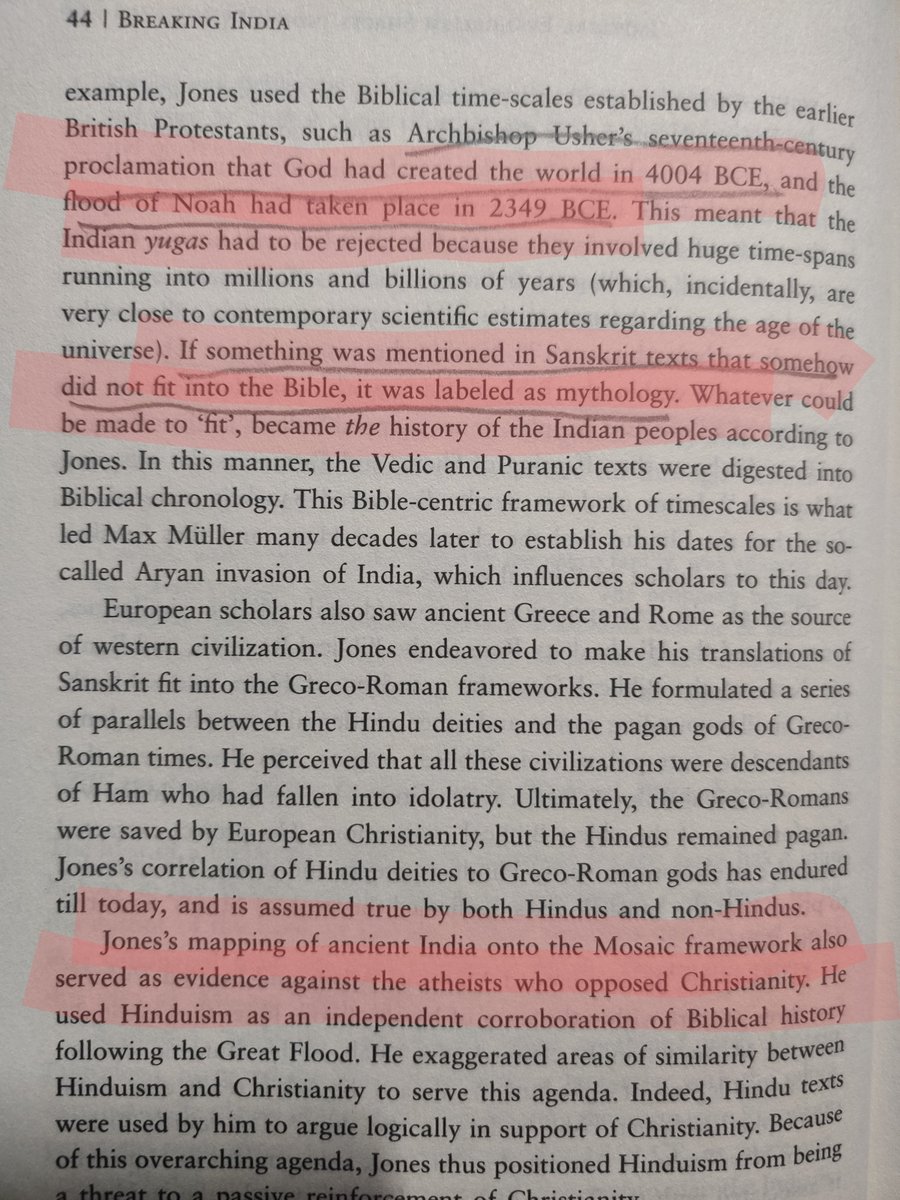
9/n
Britishers took forward this theory of Aryan’s racism superiority to control ‘India’.
1830, Macaulay was appointed convert India to a Christian country. He wanted Indologist Max Muller (1823-1900).
Britishers took forward this theory of Aryan’s racism superiority to control ‘India’.
1830, Macaulay was appointed convert India to a Christian country. He wanted Indologist Max Muller (1823-1900).
10/n
Mueller propounded the theory of Arya as a race of a family of languages and who spoke them – linguistic divide.
as per him, Riv Veda claimed only Brahman, Kshatriya as Aryan and categorized Sudra as non-Aryan. He called “Arya” (or Aryan) a race.
@RajivMessage


Mueller propounded the theory of Arya as a race of a family of languages and who spoke them – linguistic divide.
as per him, Riv Veda claimed only Brahman, Kshatriya as Aryan and categorized Sudra as non-Aryan. He called “Arya” (or Aryan) a race.
@RajivMessage


11/n
Max Muller’s Aryan linguistic category was converted by Risley into caste 1901 Census in India
He carried out “Nasal Index” to classify jatis as Hindus and tribes as non-Hindus.
He decided that Indian consists of 2378 main casts and tribes and 43 races.
Max Muller’s Aryan linguistic category was converted by Risley into caste 1901 Census in India
He carried out “Nasal Index” to classify jatis as Hindus and tribes as non-Hindus.
He decided that Indian consists of 2378 main casts and tribes and 43 races.
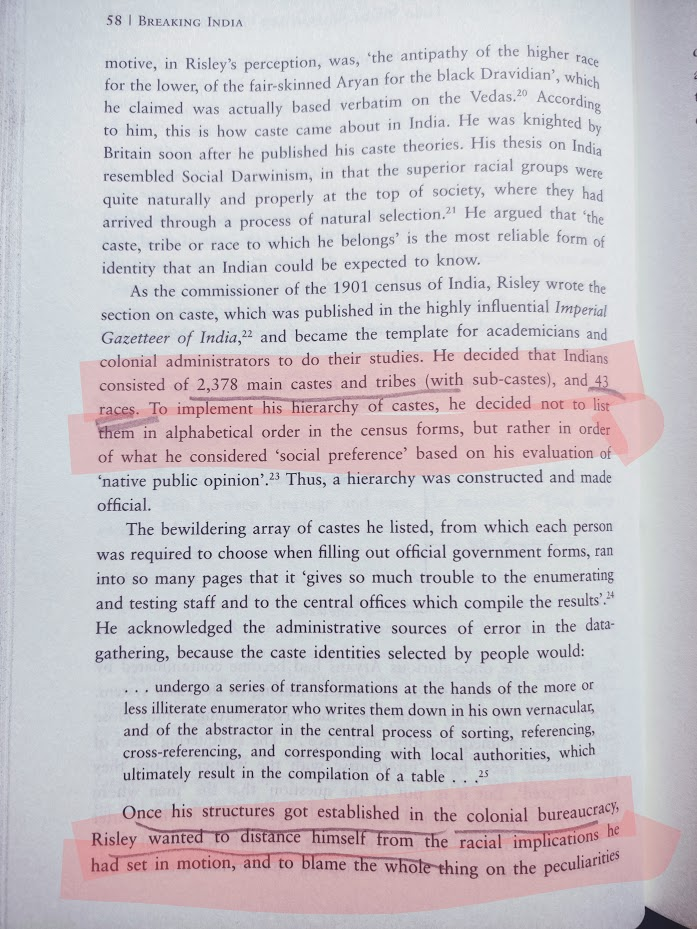
12/n
The racial theories landed up in several regional conflicts consequently and subsequently
1. Holocaust & WW-II
2. Rawanda conflict
3. Naval conflict and First Independence War by India in 1857
@RajivMessage


The racial theories landed up in several regional conflicts consequently and subsequently
1. Holocaust & WW-II
2. Rawanda conflict
3. Naval conflict and First Independence War by India in 1857
@RajivMessage
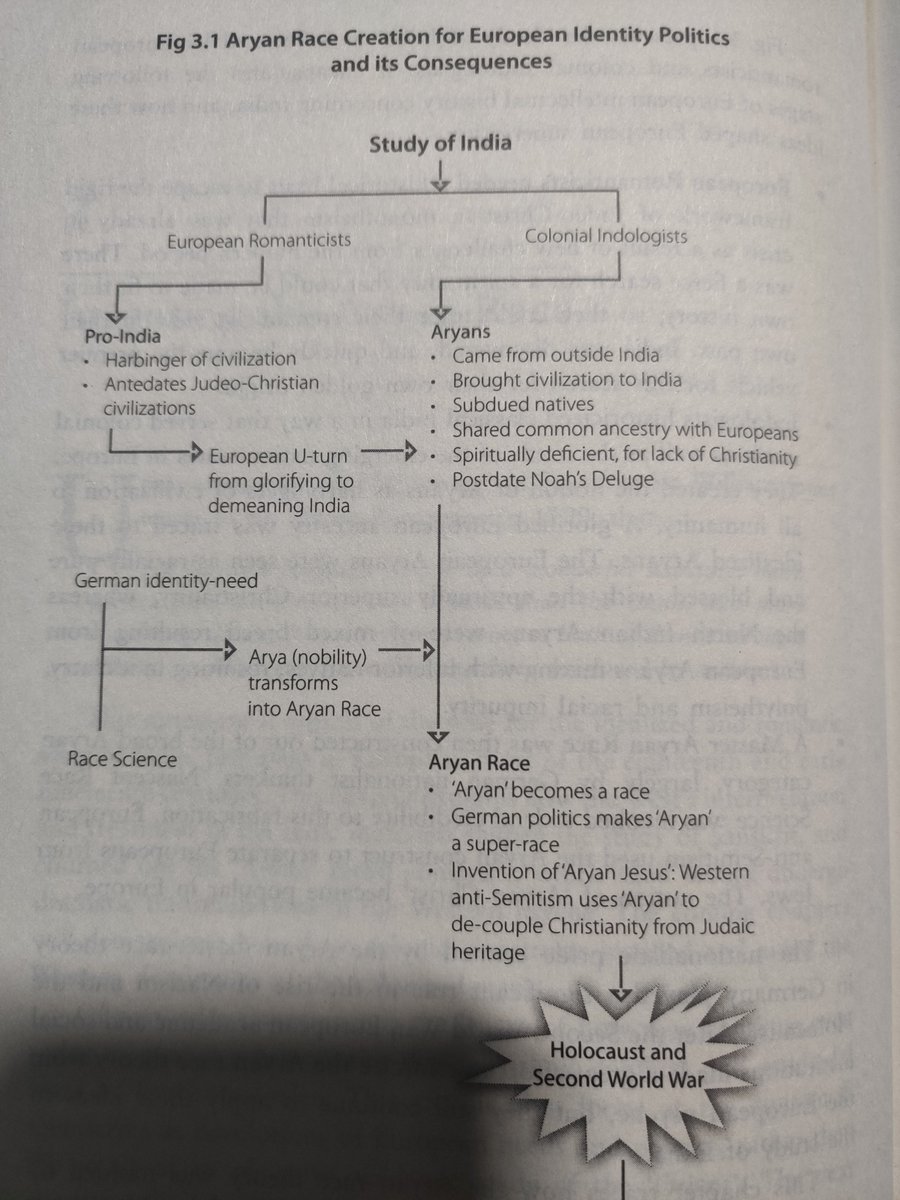

13/n
Euro-Indologist chose to ignore River Saraswati which is mentioned in RigVeda 65 times
Vaidic wisdom existed 9KYA BC
Horses and Chariots were present in India way before belief of indologists.
Euro-Indologist chose to ignore River Saraswati which is mentioned in RigVeda 65 times
Vaidic wisdom existed 9KYA BC
Horses and Chariots were present in India way before belief of indologists.
https://twitter.com/Aabhas24/status/1166238233291657216?s=20
https://twitter.com/Aabhas24/status/1166264836122038273?s=20
https://twitter.com/Aabhas24/status/1166374944214642688?s=20
14/n
Imagine Rich knowledge in Veda written in Scientific Language #Sanskrit
The Rich Vedic History as old as 33KYA @NileshOa
India as Navigation Giant in 3kBCE
Dentistry in 9kBCE
Imagine Rich knowledge in Veda written in Scientific Language #Sanskrit
The Rich Vedic History as old as 33KYA @NileshOa
India as Navigation Giant in 3kBCE
Dentistry in 9kBCE
https://twitter.com/AstroAmigo/status/1283456788197564417?s=20
https://twitter.com/ARUNADE6/status/1278605996756066304?s=20
https://twitter.com/i__Mystic/status/1282560124826128385?s=20
https://twitter.com/i__Mystic/status/1282276409575182337?s=20
15/n
Pre-harappan sites in Gujarat
Discovery of Dock in #Lothal dating ~3000 BCE
Pre-harappan sites in Gujarat
Discovery of Dock in #Lothal dating ~3000 BCE
https://twitter.com/davidfrawleyved/status/1233402944739041280?s=20
https://twitter.com/i__Mystic/status/1282560137820078080?s=20
16/n
Colonisers with Superiority COMPLEX, struggling with 'Witch crafting'👇
Treating woman as vessel of procreation
Calling nauch girl & courtesan as prostitute
Would they understand RICH VEDIC culture?



Colonisers with Superiority COMPLEX, struggling with 'Witch crafting'👇
Treating woman as vessel of procreation
Calling nauch girl & courtesan as prostitute
Would they understand RICH VEDIC culture?
https://twitter.com/i__Mystic/status/1272460302735470594?s=20
https://twitter.com/i__Mystic/status/1280067065106268162?s=20
https://twitter.com/i__Mystic/status/1278895136924033029?s=20

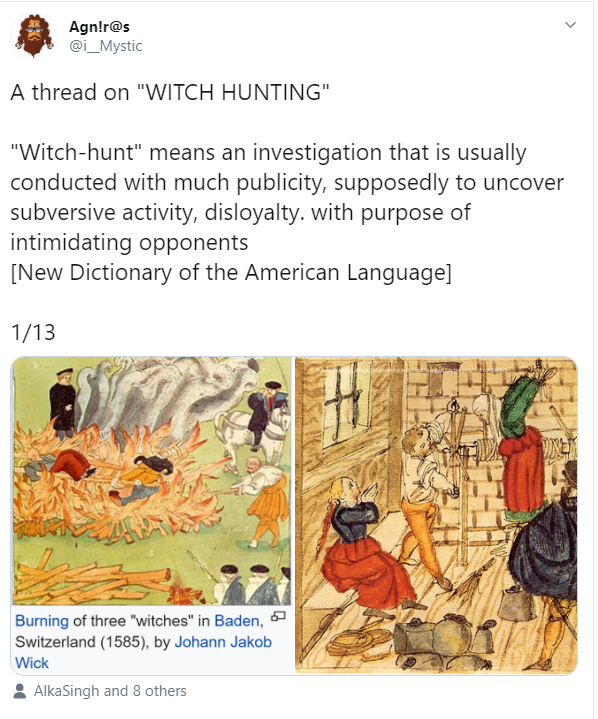
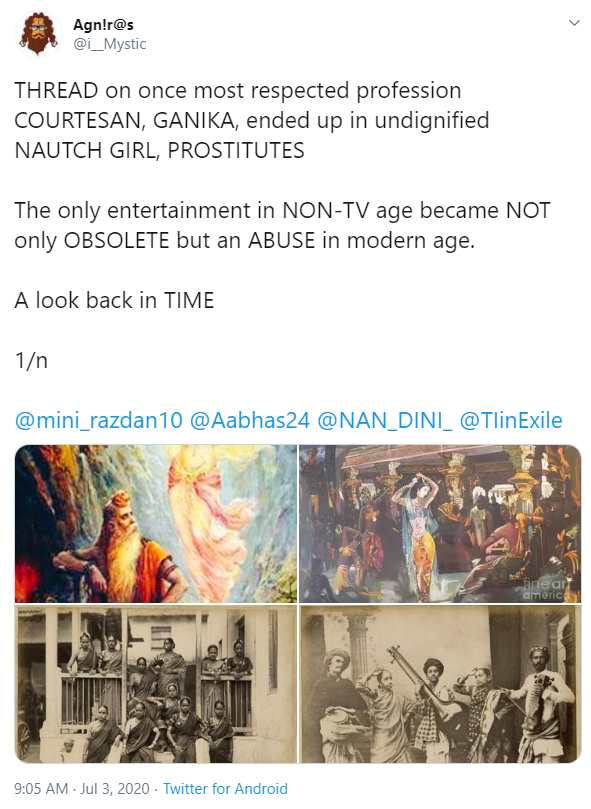
17/n
Stone tools found in Attirampakkam, Tamil Nadu dates back 350KYears debunking theory that homo-erectus exting 600Kyear ago and modern man came into being 80kYear before.
@RajVedam1
thewire.in/science/stone-…

Stone tools found in Attirampakkam, Tamil Nadu dates back 350KYears debunking theory that homo-erectus exting 600Kyear ago and modern man came into being 80kYear before.
@RajVedam1
thewire.in/science/stone-…
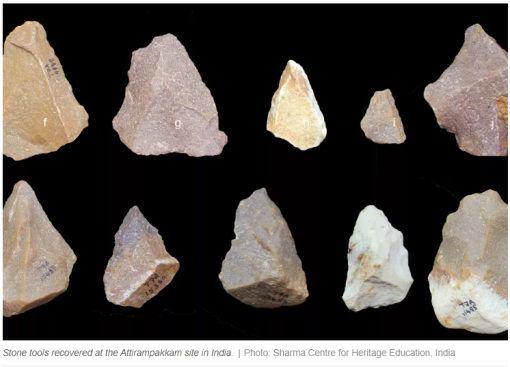
18/n
'Narmada Man' Skull discovered in MP, India, provides the first scientifically recorded evidence of human skeletal remains from the Indian subcontinent dating to the late Middle Pleistocene of 300Ky to 150Kyears ago. @RajVedam1
anthropology.iresearchnet.com/narmada-man/

'Narmada Man' Skull discovered in MP, India, provides the first scientifically recorded evidence of human skeletal remains from the Indian subcontinent dating to the late Middle Pleistocene of 300Ky to 150Kyears ago. @RajVedam1
anthropology.iresearchnet.com/narmada-man/
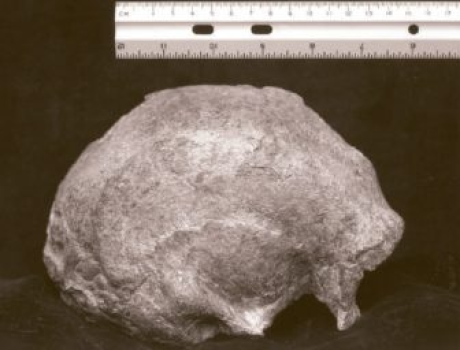
19/n
As per @RajVedam1 The excavation in Keezhadi, Tamil Nadu, based on the studies and available data, the carbon dating should be in an interval of 821 BCE to 2974 BCE for the terminus layer.
thenewsminute.com/article/major-…
academia.edu/40396717/Analy…




As per @RajVedam1 The excavation in Keezhadi, Tamil Nadu, based on the studies and available data, the carbon dating should be in an interval of 821 BCE to 2974 BCE for the terminus layer.
thenewsminute.com/article/major-…
academia.edu/40396717/Analy…
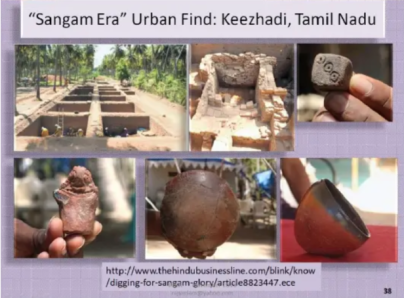

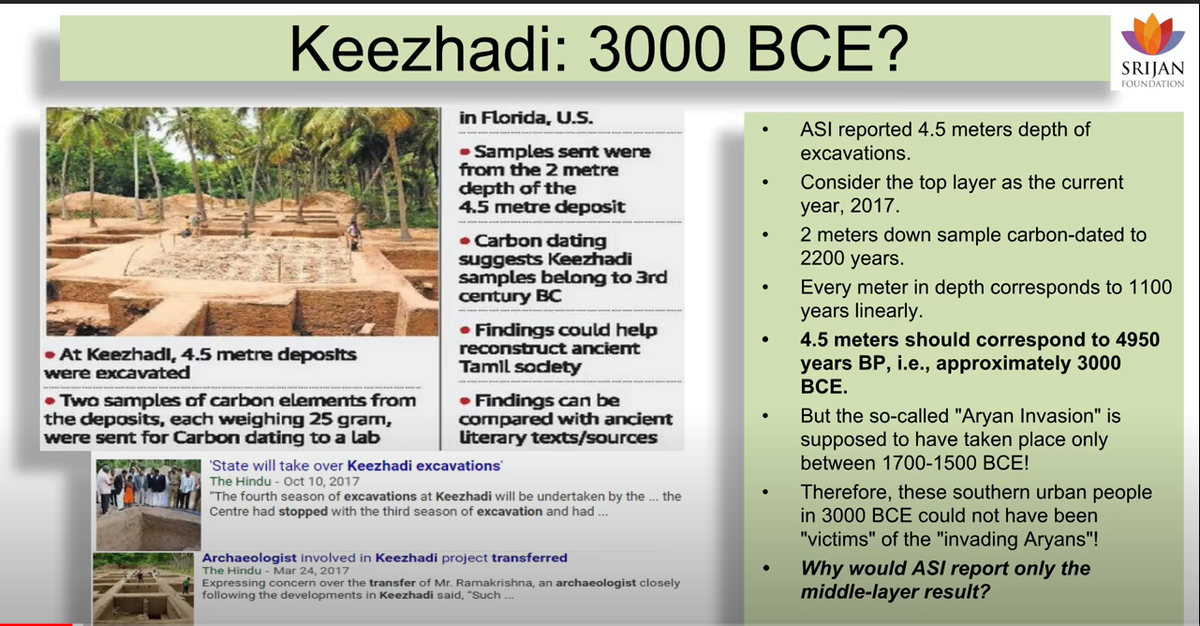
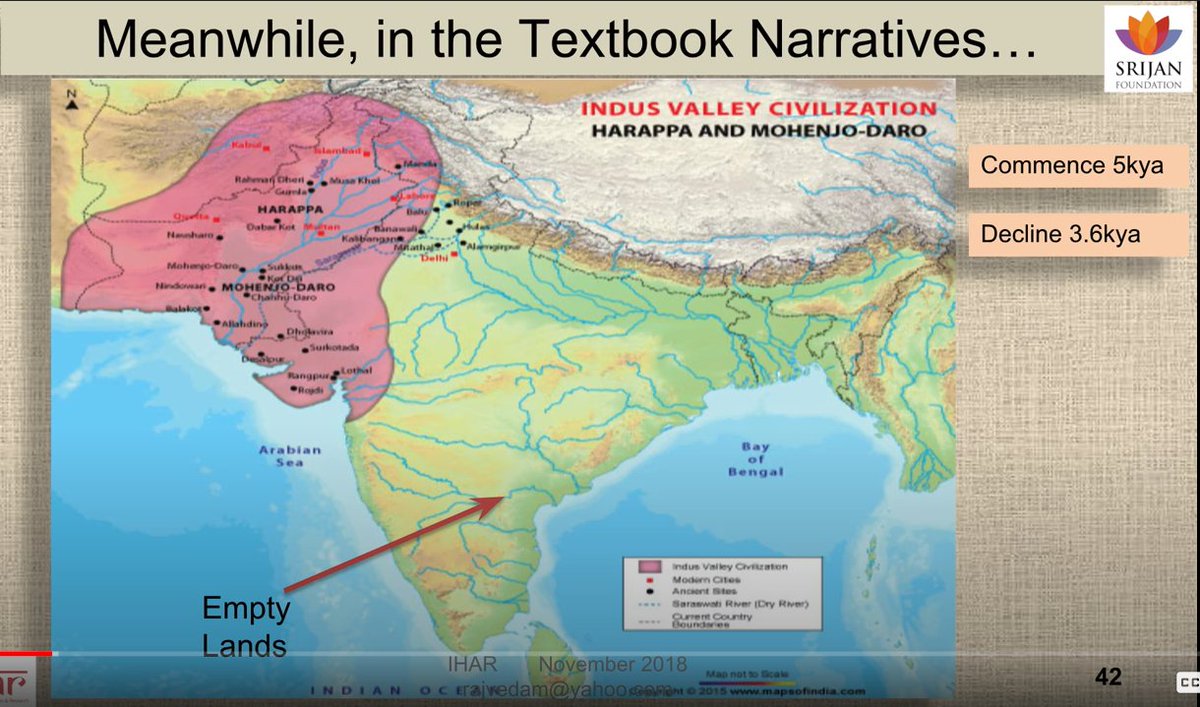
20/n
Rakhigarhi skeleton genetics study shows that Harrappans were all Indians @ProfVemsani
@Voice_For_India
economictimes.indiatimes.com/news/politics-…



Rakhigarhi skeleton genetics study shows that Harrappans were all Indians @ProfVemsani
@Voice_For_India
https://twitter.com/ProfVemsani/status/1283834192107900928?s=20
economictimes.indiatimes.com/news/politics-…
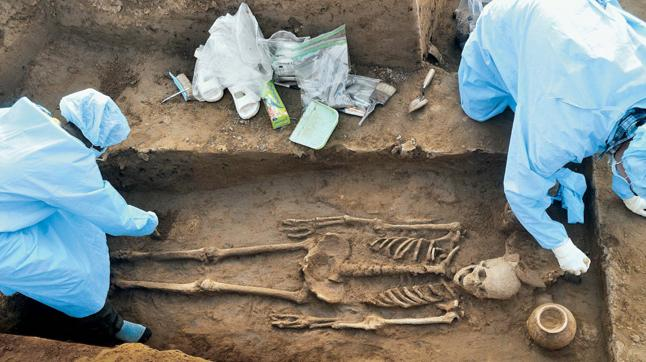
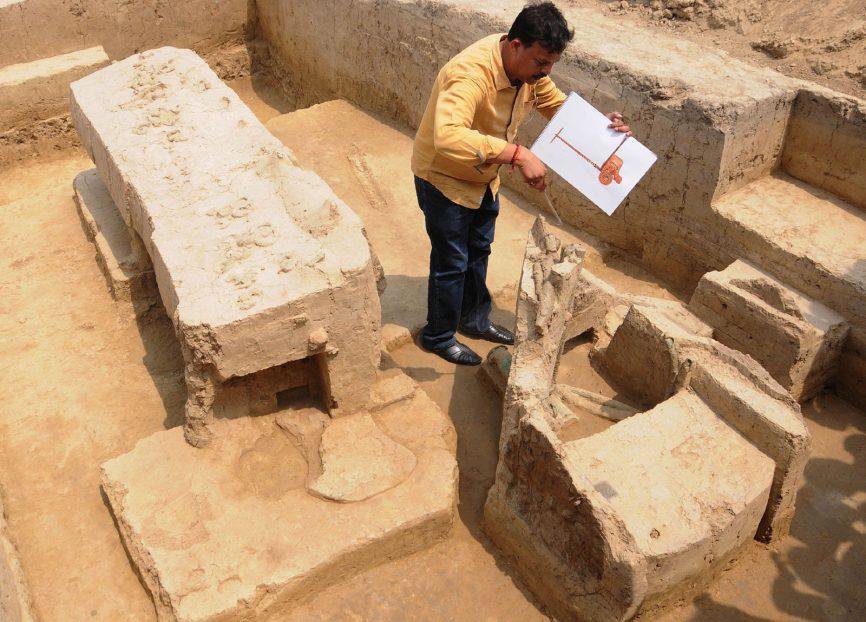
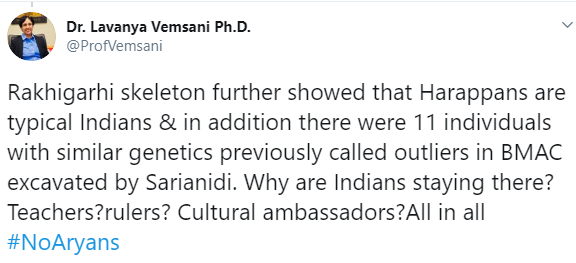
21/n
Several other 'GENETIC STUDIES' prove that Present days Indian were native originally to India only. The migration actually happened OUTWARD.
@ProfVemsani @RajVedam1
academia.edu/7893126/Geneti…
nature.com/articles/ejhg2…
cell.com/cell/fulltext/…




Several other 'GENETIC STUDIES' prove that Present days Indian were native originally to India only. The migration actually happened OUTWARD.
@ProfVemsani @RajVedam1
https://twitter.com/ProfVemsani/status/1283834190379786241?s=20
academia.edu/7893126/Geneti…
nature.com/articles/ejhg2…
cell.com/cell/fulltext/…
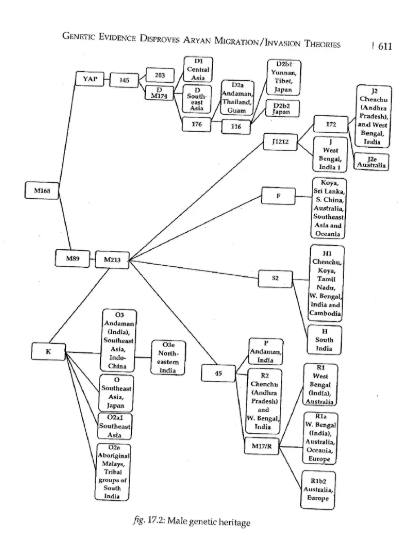

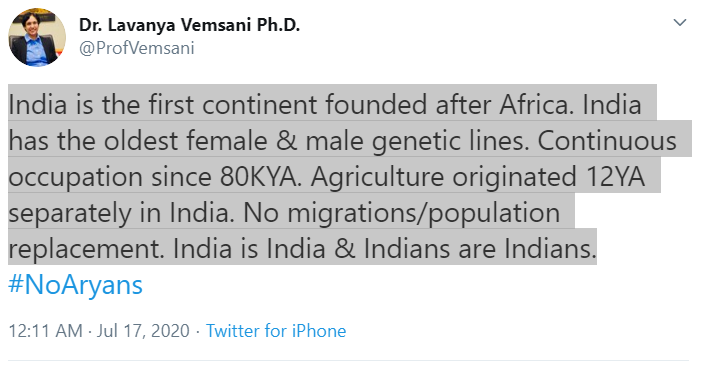
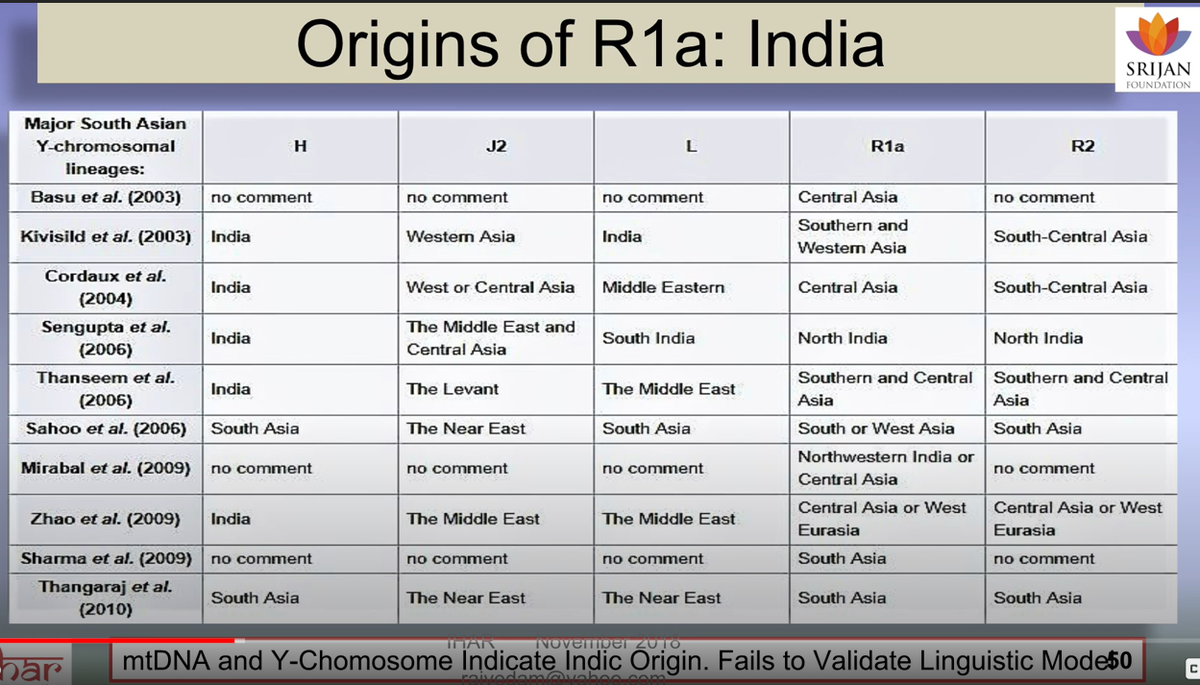
22/n
Discovery of Chariot in Sanauli, UP, India itself is sufficient to debunk false AIT.
What to speak of other Archaeological, Paleontologist, Genetic proofs.
It proves that Indus-Valley-'Saraswati'-Civilisation existed ~2000BCE
outlookindia.com/website/story/…

Discovery of Chariot in Sanauli, UP, India itself is sufficient to debunk false AIT.
What to speak of other Archaeological, Paleontologist, Genetic proofs.
It proves that Indus-Valley-'Saraswati'-Civilisation existed ~2000BCE
outlookindia.com/website/story/…

23/n
Continuity of Civilisation from Harappan excavation
1. Namaste
2. Swastika
3. Yoga
4. Shivalinga
@RajVedam1 @Aabhas24



Continuity of Civilisation from Harappan excavation
1. Namaste
2. Swastika
3. Yoga
4. Shivalinga
@RajVedam1 @Aabhas24

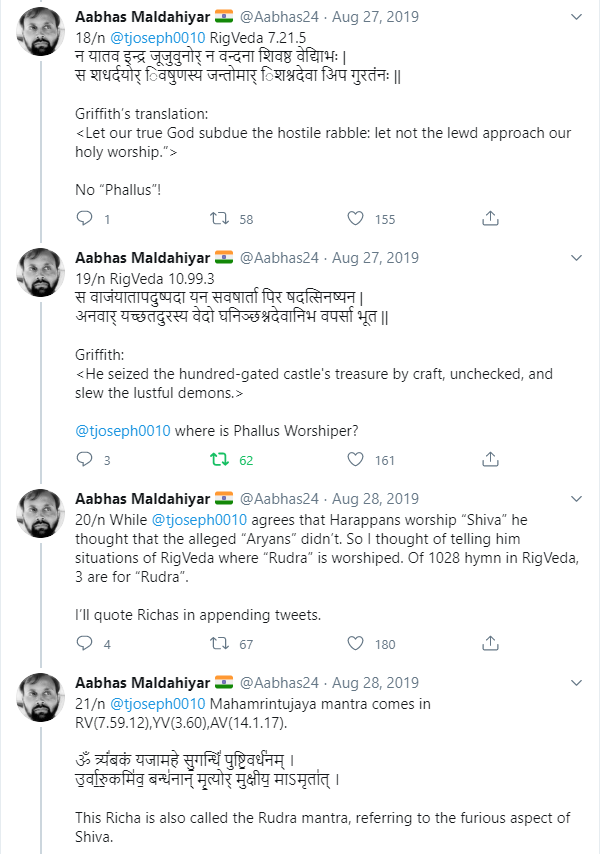

24/n
Study by A R Nair, S V Navada and S M Rao Thar Desert states that cooler and pluvial conditions in the Holocene were present in the region what is called dried Saraswati River.
@meenakshisharan
osti.gov/etdeweb/servle…


Study by A R Nair, S V Navada and S M Rao Thar Desert states that cooler and pluvial conditions in the Holocene were present in the region what is called dried Saraswati River.
@meenakshisharan
osti.gov/etdeweb/servle…


25/n
Spectacular and detailed YT by @RajVedam1
@RS_swaraj @YoSwaroop @writeryashna @_i_wanderer
Spectacular and detailed YT by @RajVedam1
@RS_swaraj @YoSwaroop @writeryashna @_i_wanderer
https://twitter.com/mmpandit/status/1280097392612777984?s=20
https://twitter.com/sattology/status/1283748420478353413?s=20
26/26
Thanks to @Aabhas24 @RajVedam1 @NileshOak @ProfVemsani @RajivMessage whose references I have used in this thread.
CC to @Sanjay_Dixit @davidfrawleyved @Voice_For_India @NAN_DINI_ @mini_razdan10
@Mahender_Chem @sattology
#adityasatsangi
Thanks to @Aabhas24 @RajVedam1 @NileshOak @ProfVemsani @RajivMessage whose references I have used in this thread.
CC to @Sanjay_Dixit @davidfrawleyved @Voice_For_India @NAN_DINI_ @mini_razdan10
@Mahender_Chem @sattology
#adityasatsangi
@NileshOak
@TarekFatah @arifaajakia @davidfrawleyved @gopugoswami @Alawmagic @NileshOak @JoeAgneya @ChroniclesClio
@sukarma000 @HINDprehistory
@Pragyata_ @mmpandit @fgautier26
@ancient_bharat @ancient_in
#fake_aryan_invasion_theory
#aryan_invasion_theory
@sukarma000 @HINDprehistory
@Pragyata_ @mmpandit @fgautier26
@ancient_bharat @ancient_in
#fake_aryan_invasion_theory
#aryan_invasion_theory
Shivalinga from Harappan Civilisation, around 5 thousand years old, National Museum, Delhi
@LevinaNeythiri You were right Shiva Lingas didn;t have base during Harappan era.

@LevinaNeythiri You were right Shiva Lingas didn;t have base during Harappan era.
https://twitter.com/LevinaNeythiri/status/1323638912997380098?s=20
https://twitter.com/GemsOfIndology/status/1406600605691383816?s=20

If previous tweet is correct than this one is wrong. Shivalinga conjoined with Yoni. May be both the concepts were evolving during Harappan era.
https://twitter.com/GemsOfIndology/status/1305116878319349761?s=20
@MumukshuSavitri
Thank you @narendramodi Modiji for overhauling your cabinet. It was long due and desired
Requesting you to also repeal entire @ASIGoI good for nothing engaged in graveyards maintenance.
Majority of excavation sites are ruining (the last possible evidence of our glorious past)
Requesting you to also repeal entire @ASIGoI good for nothing engaged in graveyards maintenance.
Majority of excavation sites are ruining (the last possible evidence of our glorious past)
Appending article by @subhash_kak
https://twitter.com/subhash_kak/status/1466210656093417472?t=kHhj6RIktLgbJwvGfNIZEg&s=19
++ New Genome Studies debunks AIT by miles
https://twitter.com/GemsOfIndology/status/1498558162298814464?s=20&t=_8CF6U1enS7e4O61GJK-qg
Appending metallurgical Innovation first in the world still used by NASA
https://twitter.com/GemsOfIndology/status/1499207225738346497?t=YU6NmUWe02kU-CsFy5vNxQ&s=19
Appending more updates
https://twitter.com/GemsOfIndology/status/1501735681827086341?t=FiI6H5crA0G8xJHCSpZL6Q&s=19
8a : Ekastaka - Wrong interpretation by Western Scholar to subdue India's antiquity. This led to take away plane geometry pioneered by Indians by greeks
https://twitter.com/GemsOfIndology/status/1532018674521227266?s=20&t=m_ja08tgSigM8-jAtg3eBQ
@RajVedam1 boss
https://twitter.com/GemsOfIndology/status/1534365130233810944?t=sOu1k5wWyqn-lclEVUbd-A&s=19
33/n
"Indians may have migrated to Mesopotamia 5000 ybp."
Research on Individuals from 'Syria' Dated 2500 BCE and 500CE shows that mtDNA haplogroups carried by them arose in India
This DNA found in Indians is missing in today's Syrians
#Archaeology
"Indians may have migrated to Mesopotamia 5000 ybp."
Research on Individuals from 'Syria' Dated 2500 BCE and 500CE shows that mtDNA haplogroups carried by them arose in India
This DNA found in Indians is missing in today's Syrians
#Archaeology
https://twitter.com/GemsOfIndology/status/1551195005426864129?t=QfuxPnkJFP5bw3bWu5pkBQ&s=19
34/n
𝐓𝐚𝐦𝐢𝐥 𝐌𝐞𝐫𝐜𝐡𝐚𝐧𝐭 𝐢𝐧 𝐀𝐧𝐜𝐢𝐞𝐧𝐭 𝐌𝐞𝐬𝐨𝐩𝐨𝐭𝐚𝐦𝐢𝐚 5000ybp
Another study on 15751 DNAs from India suggests that south India and northeast India served as the source of the ancient Mesopotamian mtDNA gene pool.
#Archaeology
𝐓𝐚𝐦𝐢𝐥 𝐌𝐞𝐫𝐜𝐡𝐚𝐧𝐭 𝐢𝐧 𝐀𝐧𝐜𝐢𝐞𝐧𝐭 𝐌𝐞𝐬𝐨𝐩𝐨𝐭𝐚𝐦𝐢𝐚 5000ybp
Another study on 15751 DNAs from India suggests that south India and northeast India served as the source of the ancient Mesopotamian mtDNA gene pool.
#Archaeology
https://twitter.com/GemsOfIndology/status/1551197922456264706?s=20&t=_4f4SICbVc1ynSC_EJH9oQ
35/n
'Horses', 'Tapirs' and 'Rhinos' originated in India ~5.5 crore years ago (54.5 mya) proven from Eocene fossils remains.
#Archaeology
nature.com/articles/ncomm…
'Horses', 'Tapirs' and 'Rhinos' originated in India ~5.5 crore years ago (54.5 mya) proven from Eocene fossils remains.
#Archaeology
nature.com/articles/ncomm…
https://twitter.com/GemsOfIndology/status/1551930510401732609?s=20&t=6aD8c3NslJKT6z37h5Ds6w
36/n
Horse bones found in Hunsgi Baichbal valley's Acheulian sites, Karnataka pertaining to lower paleolithic period appx (2.580 ± 0.005 Ma and 0.773 ± 0.005 Ma) … #Archaeology
journals.ub.uni-heidelberg.de/index.php/qu/a…
Horse bones found in Hunsgi Baichbal valley's Acheulian sites, Karnataka pertaining to lower paleolithic period appx (2.580 ± 0.005 Ma and 0.773 ± 0.005 Ma) … #Archaeology
journals.ub.uni-heidelberg.de/index.php/qu/a…
https://twitter.com/GemsOfIndology/status/1552112511956049922?s=20&t=6aD8c3NslJKT6z37h5Ds6w
24a
Latest satellite images, ground atudies proves #Saraswati did exist 4000 years ago. Even a Dutch map from 1746 ce shows it flowing parallel to Indus river
#Archaeology
researchgate.net/figure/Course-…

Latest satellite images, ground atudies proves #Saraswati did exist 4000 years ago. Even a Dutch map from 1746 ce shows it flowing parallel to Indus river
#Archaeology
researchgate.net/figure/Course-…

• • •
Missing some Tweet in this thread? You can try to
force a refresh





